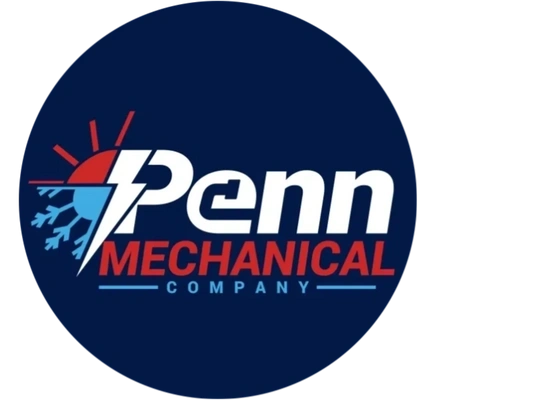Boiler Installation
Reliable Boiler Install & Replacement in Berks County. PA
A good boiler disappears into the background: radiators warm evenly, floors feel comfortable, and the system runs quietly with steady bills. When that’s not your reality, cold baseboards, kettling/banging, rooms that never catch up, pressure swings, or a combi that can’t keep shower temps steady—the problem is rarely just old equipment. It’s usually a mismatch between the boiler, the piping, and the home’s actual heat loss.
Solution: a design-first boiler installation that matches output to your emitters, routes water the right way, and is commissioned with real measurements so comfort is consistent and the system stays quiet and efficient.
When a New Boiler Makes Sense (from general to specific)
- Comfort never stabilizes: Rooms heat slowly, radiators are hot at one end and cool at the other, or your thermostat overshoots and undershoots.
- Noises or short cycling: Gurgling, banging (kettling), or frequent on/off cycling signal scale buildup, air, or oversizing.
- Pressure problems: Relief valve dribbles, the gauge swings wildly, or you’re adding water often.
- Hot-water inconsistency (combi units): Shower temps fluctuate or recovery is sluggish.
- Aging or obsolete equipment: Parts are scarce, efficiency is dated, or venting is out of code.
If two or more apply, it’s time to design—not just swap—a new boiler.
- BBB A+ Rated
- owner over 30 years business
- 100% Satisfaction Guarantee
- Fully Licensed & Insured
- On-Time Guarantee
- Upfront Pricing
Choosing the Right Boiler (What Actually Matters)
Fuel & Type
- Modulating/Condensing (mod-con) for high efficiency—best when return water runs cool (radiant floors, properly sized baseboard).
- Cast-iron (non-condensing) for simplicity and high-temp emitters, with proven longevity.
Space & DHW Needs
- Combi boiler if you need space heat + domestic hot water in one appliance and your hot-water demand fits.
- Boiler + indirect tank when you want strong hot-water recovery and long tank life.
Venting & Location
- Confirm direct-vent options, combustion air, and condensate routing (with a neutralizer on mod-cons).
- Pick a location with service access and noise control in mind.
Output & Staging
- Right-size by room-by-room heat-loss—avoid oversizing that short cycles, wastes fuel, and makes noise.
- Prefer modulating burners for smooth, quiet operation that follows your home’s load.
Design First: How We Build a System That Feels Effortless
- Heat-loss calculations: We match boiler capacity to the home and to the actual output of your radiators/baseboard/radiant loops.
- Emitter matching & water temperature: Set supply temps that make sense for your emitters; leverage outdoor reset so water temp drops on mild days.
- Primary–secondary/hydraulic separation: Stable flow through the boiler heat exchanger while zones do their own thing—no fighting circuits.
- Air, dirt & magnetite separation: Quiet pumps, clean water, and longer component life.
- Zoning that works: Circulators or zone valves sized for silent, even heat—no pump howl or dead loops.
- Pump strategy: ECM circulators chosen for head/flow; delta-T control when appropriate to keep emitters in their sweet spot.
- Controls that help (not complicate): Simple, serviceable layouts with clear labeling and a reset curve you can live with.
Installation Day — What You’ll See (No Surprises)
- Protection & plan review — Floors covered; scope, placement, and venting path confirmed.
- Safe removal — Old boiler isolated, drained, and hauled away; gas, power, and vent terminations verified.
- Set & pipe — Boiler set level; near-boiler piping built to spec with isolation valves, purge points, and separators.
- Fill, purge & balance — System filled and air purged; zones verified for flow; expansion tank pre-charge checked.
- Combustion tuning — Analyzer-guided adjustment for safe, efficient burn; draft verified.
- Commissioning — Documented supply/return temps, delta-T, pump amps/flow estimates, safeties (LWCO, limit, relief), and reset curve set.
- Owner orientation — How to read the display, where to bleed (if needed), filter/strainer locations, and simple care tips. We leave the space clean.
Most straightforward replacements complete in one to two days; larger piping changes, indirect tanks, or control upgrades can add time—we’ll map that out beforehand.
Commissioning Checklist (The Part That Makes Comfort Last)
- Combustion analysis numbers recorded and within manufacturer’s spec
- Temperature rise and delta-T across zones verified
- Outdoor reset enabled and tuned for your emitters
- Expansion tank charge matched to system fill; relief valve confirmed
- Air/dirt/magnetite separators installed and functioning
- Condensate (mod-con) trapped, neutralized, and draining properly
- Near-boiler wiring labeled; sensors placed where they belong
Options That Are Worth Considering (Based on Your Goals)
- Indirect water heater for strong hot-water performance and efficiency
- Mixing valve or low-temp manifold for radiant floors with a high-temp baseboard loop
- Magnetic filter to protect ECM pumps in older iron systems
- Smart thermostat or simple outdoor reset dial—we’ll match controls to your comfort style
Frequently Asked Questions
Yes. We design to what you have, often unlocking better comfort by setting proper water temps and flow—not by replacing emitters.
We do. We’ll confirm your hot-water demand (flow rate and simultaneous fixtures) to ensure a combi truly fits—or recommend an indirect tank.
We test pH/hardness where it matters and can treat/flush systems. Clean water keeps modern heat exchangers efficient and quiet.
Handled. We install to current code and meet inspectors when required.
Ready for Radiators That Heat Evenly—and Quietly?
Tell us what you’re experiencing—slow warm-ups, kettling, pressure swings, or hot-water inconsistency—and we’ll design a boiler installation that solves causes, not just symptoms. Prefer to talk through options and timelines? Call 484-877-8864 and speak with a Penn Mechanical hydronics specialist.
